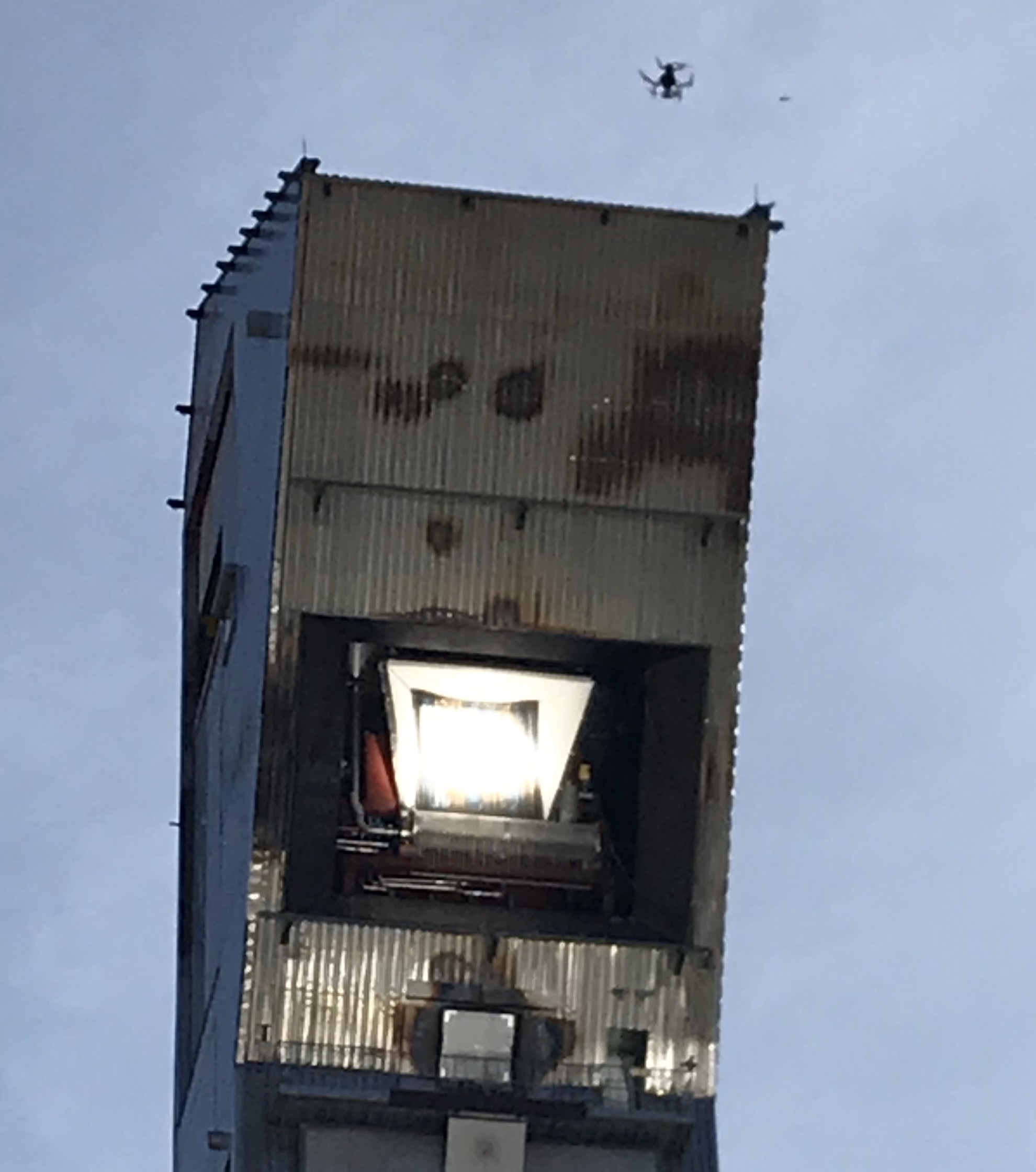
IMAGE@Opportunities and challenges in using particle circulation loops for concentrated solar power applications – Flamant et al
Abstract:
Concentrated Solar Power (CSP) is an electricity generation technology that concentrates solar irradiance through heliostats onto a small area, the receiver, where a heat transfer medium, currently a fluid (HTF), is used as heat carrier towards the heat storage and power block. It has been under the spotlight for a decade as one of the potential or promising renewable and sustainable energy technologies.
Using gas/solid suspensions as heat transfer medium in CSP has been advocated for the first time in the 1980′ s and this novel concept relies on its possible application throughout the full CSP plant, i.e., in heat harvesting, conveying, storage and re-use, where it offers major advantages in comparison with the common heat transfer fluids such as water/steam, thermal fluids or molten salt. Although the particle suspension has a lower heat capacity than molten salts, the particle-driven system can operate without temperature limitation (except for the maximum allowable wall temperature of the receiver tubes), and it can also operate with higher hot-cold temperature gradients. Suspension temperatures of over 800 ◦C can be tolerated and achieved, with addi- tional high efficiency thermodynamic systems being applicable. The application of high temperature particulate heat carriers moreover expands the possible thermodynamic cycles from Rankine steam cycles to Brayton gas cycles and even to combined electricity generating cycles.
This review paper deals with the development of the particle-driven CSP and assesses both its background fundamentals and its energy efficiency. Among the cited systems, batch and continuous operations with particle conveying loops are discussed. A short summary of relevant particle-related properties, and their use as heat transfer medium is included. Recent pilot plant experiments have demonstrated that a novel bubbling fluidized bed concept, the upflow bubbling fluidized bed (UBFB), recently adapted to use bubble rupture promoters and called dense upflow fluidized bed (DUFB), offers a considerable potential for use in a solar power tower plant for its excellent heat transfer at moderate to high receiver capacities.
For all CSP applications with particle circulation, a major challenge remains the transfer of hot and colder particles among the different constituents of the CSP system (receiver to storage, power block and return loop to the top of the solar tower). Potential conveying modes are discussed and compared. Whereas in solar heat capture, bubbling fluidized beds, particle falling films, vortex and rotary furnaces, among others, seem appro- priate, both moving beds and bubbling fluidized beds are recommended in the heat storage and re-use, and examined in the review.
Common to all CSP applications are the thermodynamic cycles in the power block, where different secondary working fluids can be used to feed the turbines. These thermodynamic cycles are discussed in detail and the current or future most likely selections are presented.
Flamant, G., Grange, B., Wheeldon, J., Siros, F., Valentin, B., Bataille, F., Zhang, H., Deng, Y., & Baeyens, J. (2023). Opportunities and challenges in using particle circulation loops for concentrated solar power applications. Progress in Energy and Combustion Science, 94, 101056. https://doi.org/10.1016/j.pecs.2022.101056
Published in Progress in Energy and Combustion Science
Full paper: Opportunities and challenges in using particle circulation loops for concentrated solar power applications














































